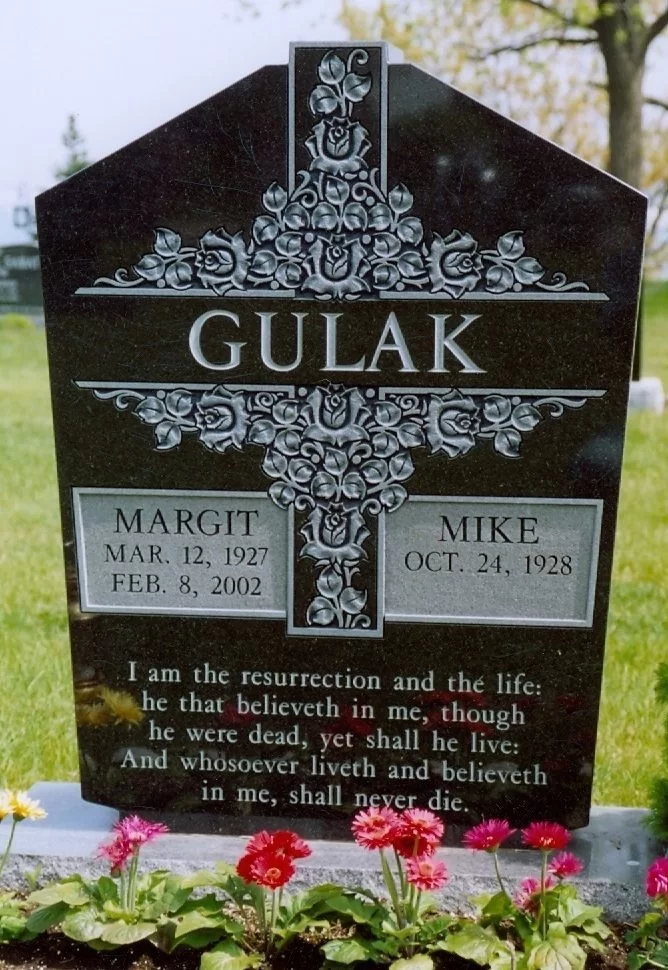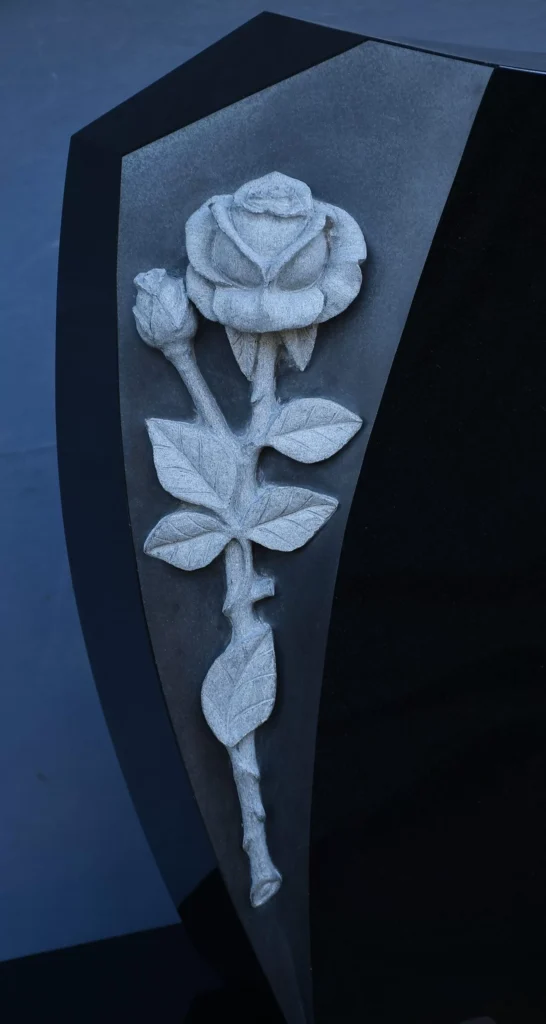Carving vs Sculpting for Cemetery Memorials: What’s the Difference?
At H&S Memorial Studio, we’ve been trusted with the responsibility of crafting many cemetery memorials and headstones over the years. Although every project is unique, one constant has always remained the importance of choosing the right type of carving to bring each tribute to life with care and respect.
If you’re currently considering options for a memorial headstone, this guide on different types of granite carving will help to clarify some of the questions you might have.
Of course, if you need any further assistance, our expert and friendly team is here to support you through the entire process. Contact us today.
In this blog post, we’ll be exploring the three primary types of granite carving:
- Flat Carving
- Shape Carving
- Sculpting
Understanding the differences between these techniques is key for your decision-making process when designing a memorial for a loved one. With over 95 years of expertise, our artisans at H&S Memorial Studio are proud to share their helpful insights with you.
What is granite carving?

Granite carving is the artful process of transforming this high-quality material into various forms, designs, or artworks. At H&S Memorial Studio, our craftsmen use specialised tools, such as sandblasting, chisels, hammers, and pneumatic drills, to remove material from the granite block or slab and gradually create a shape, with desired detail, according to the client’s design.
Granite carving is an age-old technique that’s been practised for centuries. It’s widely used in architectural ornamentation, cemetery monuments, sculptures, and decorative art pieces thanks to granite’s robustness, longevity, and aesthetic appeal.
Let’s take a deeper look at the three main techniques we use at H&S Memorial Studio.
What is flat carving?

Flat carving is the most straightforward form of granite carving. The process involves carving into the flat surface of the stone, typically removing the polished finish to create a contrast between the design and the stone’s surface.
This method results in minimal detail, focusing on simple, clear shapes.
To enhance visibility, the deeper lines that outline the shapes are usually painted. This technique is ideal for basic designs where clarity and contrast are essential, providing a subtle yet poignant tribute.
What is shape carving?


Shape carving begins similarly to flat carving, with the design carved into the stone’s flat surface. However, the process then diverges as the carver employs sandblasting to add details and curves, creating a more three-dimensional effect.
This method allows for more intricate designs compared to flat carving, as it gives the appearance of depth and shadow. The deeper lines in shape carving are also typically painted, which further accentuates the three-dimensional look, making it perfect for more elaborate memorials.
What is granite sculpting?
Sculpting takes the art of carving to its most advanced level by creating fully three-dimensional forms.
Unlike flat and shape carving, which work on a single plane, sculpting involves carving the granite to produce statues or other 3D objects that can be viewed from multiple angles.


This technique is similar to traditional statuary and requires a high level of skill and artistry. Sculpting is often used for elaborate monuments and memorials that demand a lifelike representation, offering a majestic and enduring tribute to those who have passed.

Understanding your options

Each method of granite carving serves a unique purpose and suits different design needs, from the simple and poignant to the intricate and lifelike.
Whether you’re aiming for simplicity, depth, or full three-dimensional realism, each technique offers distinct benefits to honour and memorialise in granite – and that’s what we’re here to help you with at H&S Memorial Studio.
If you’re considering a carved granite memorial and need expert guidance, contact us for a free, no-obligation consultation. Our dedicated team is here to help you design and craft a memorial that honours the legacy of your loved one with care, expertise, and respect.
FAQS: Granite Carving for Memorial Headstone
What is the most durable stone for outdoor memorials?
Granite is renowned for its durability, making it ideal for all outdoor conditions. Darker granites are particularly popular for their ability to maintain colour and detail over time.
How do I choose between flat carving, shape carving, and sculpting?
Consider the level of detail you desire and the overall impact you want the memorial to have. Flat carving is suited for simpler, elegant designs, while shape carving and sculpting allow for more intricate and three-dimensional representations.
Can granite carvings be customised for any design or inscription?
Absolutely, granite is versatile enough to accommodate almost any design, from detailed portraits to custom inscriptions. Our artisans can guide you through the process of translating your vision into stone.
How long does it take to complete a granite carving project?
The time frame can vary depending on the complexity of the project. Simple carvings might take a few weeks, while more elaborate sculptures may require several months of meticulous work.
What maintenance is required for granite memorials?
Granite memorials are relatively low maintenance. Regular cleaning with water and a mild detergent is typically sufficient to keep the stone looking pristine. For complete peace of mind, at H&S, we also offer memorial maintenance and restoration services.
Need more help?
Contact us for a personal consultation and begin the journey of creating a lasting tribute today.



